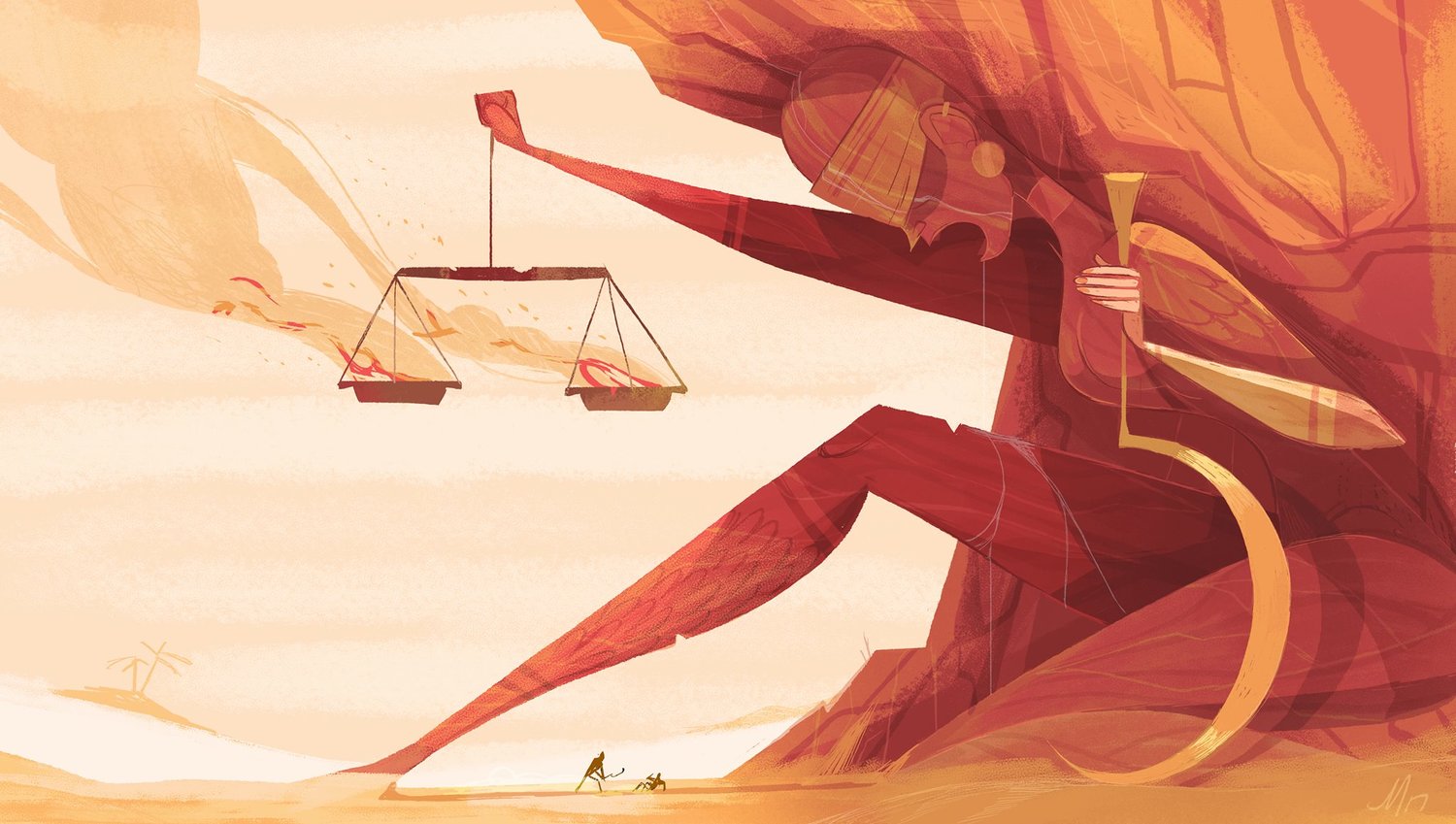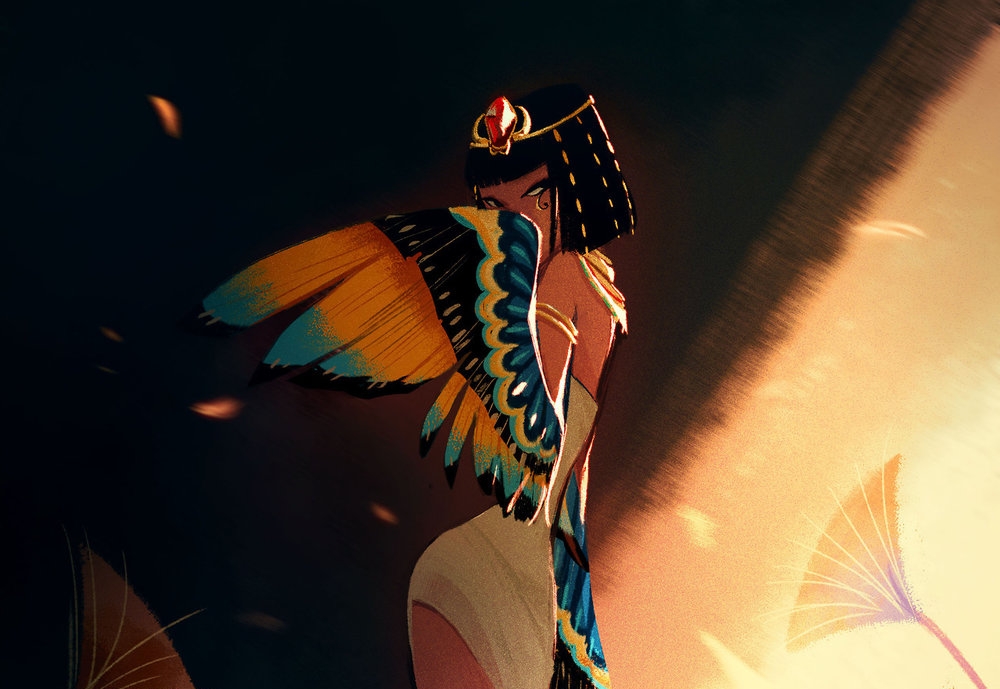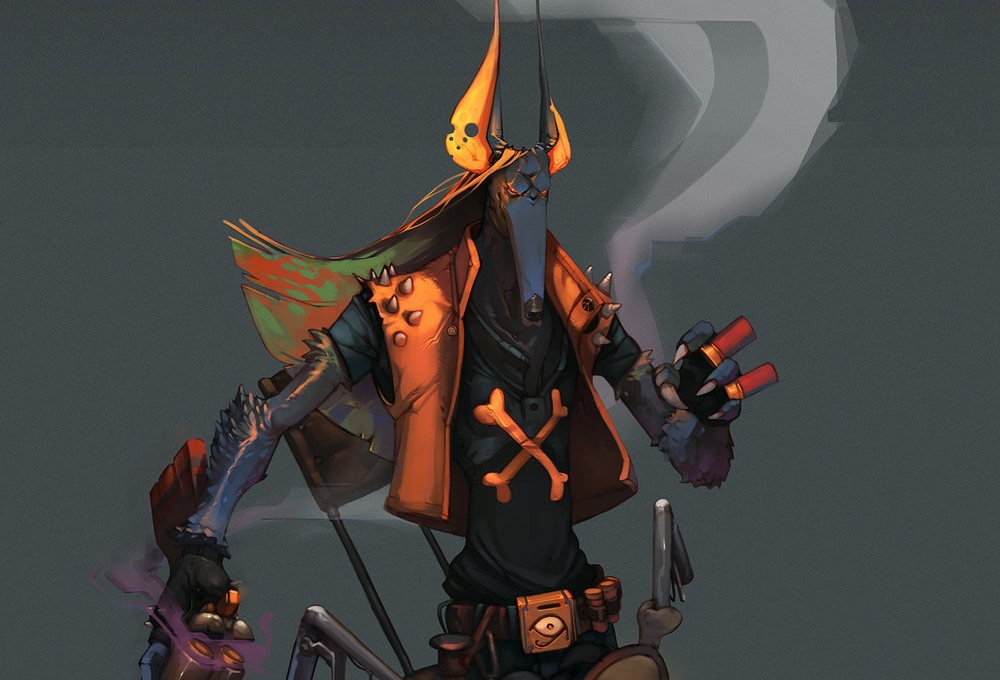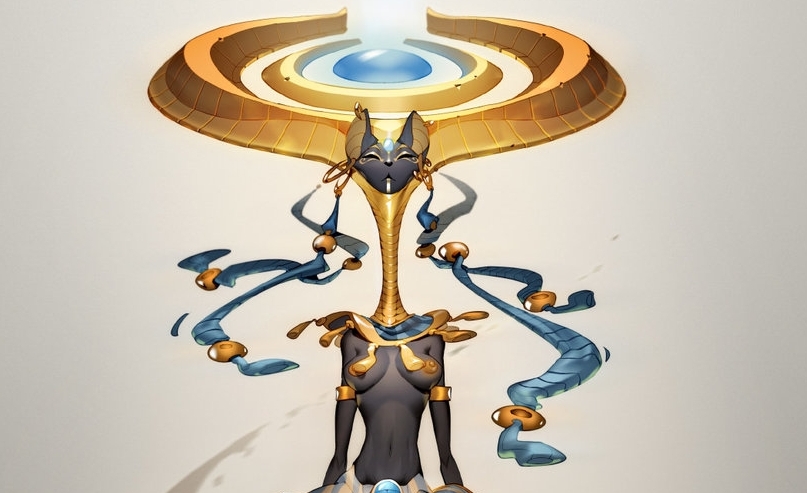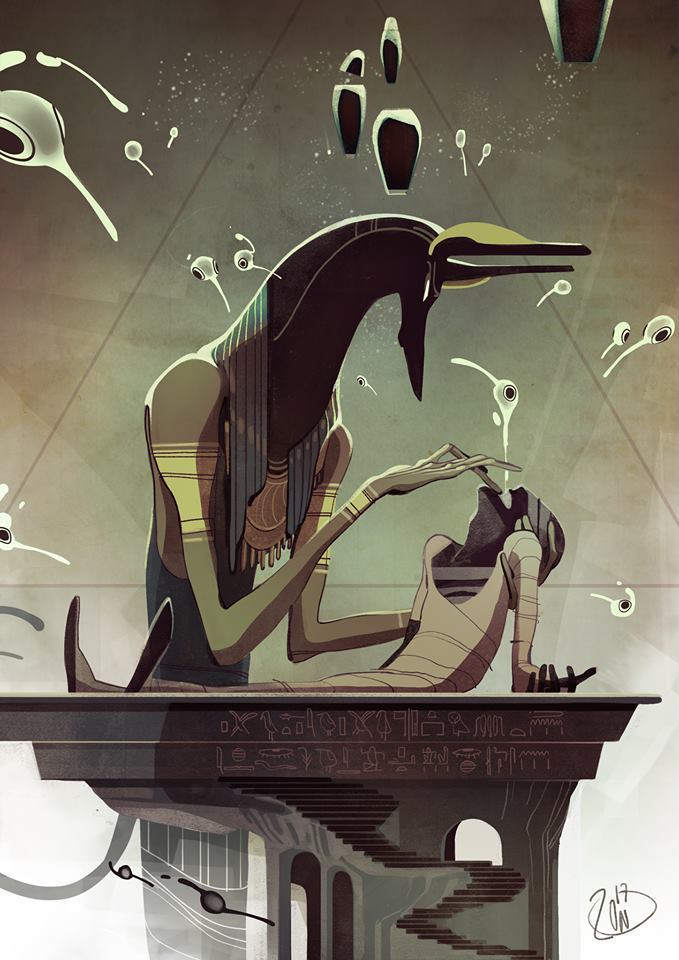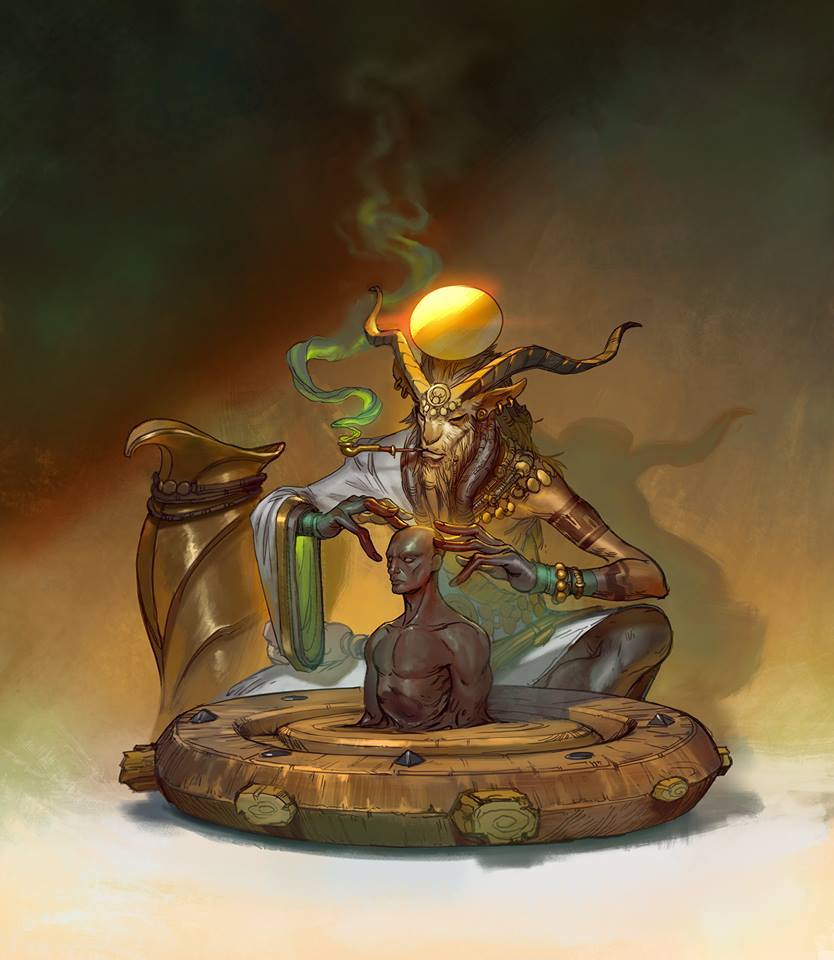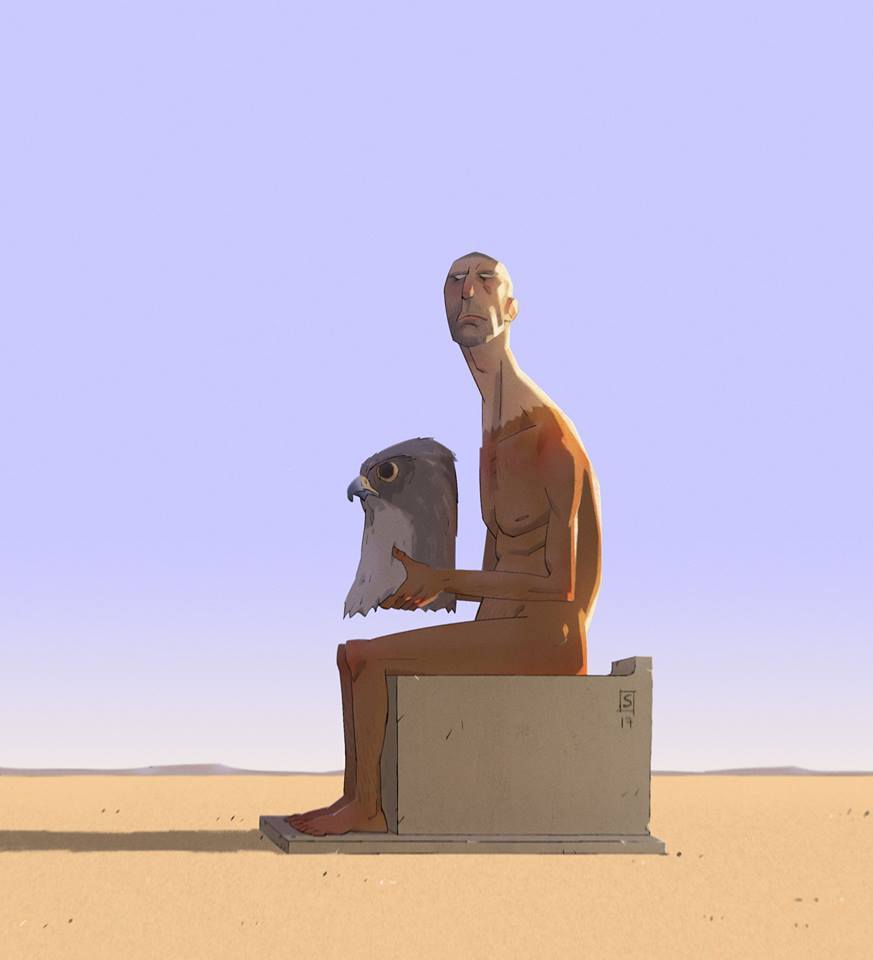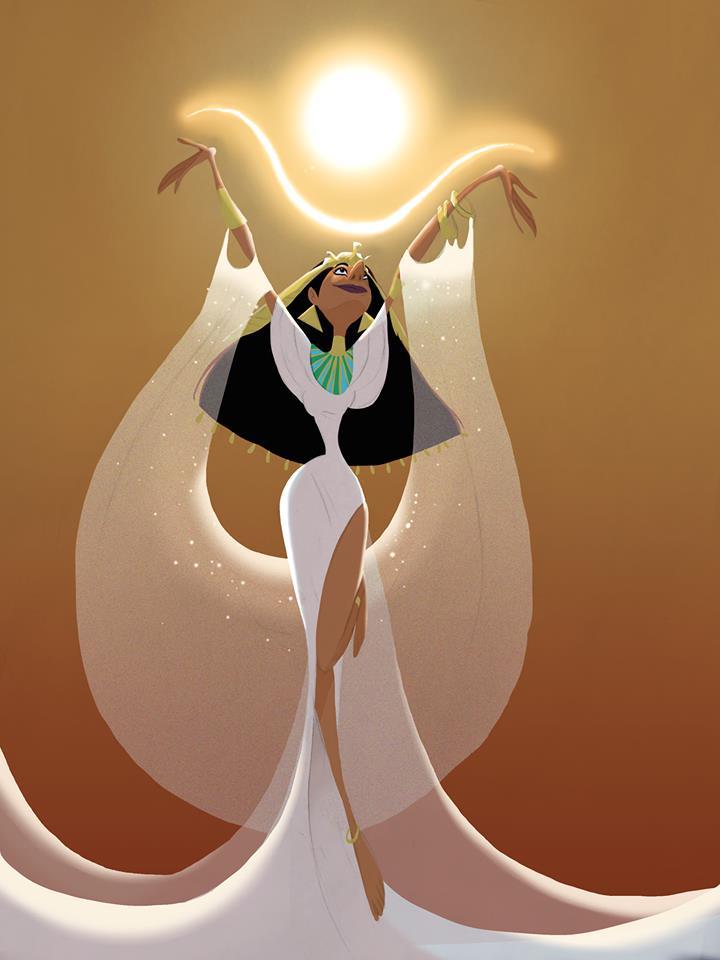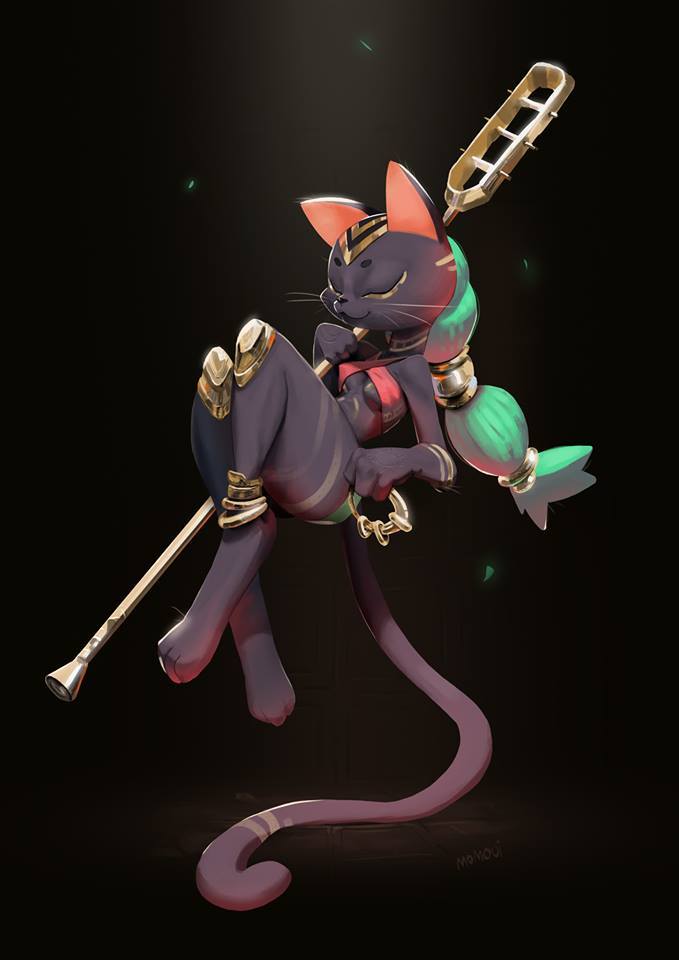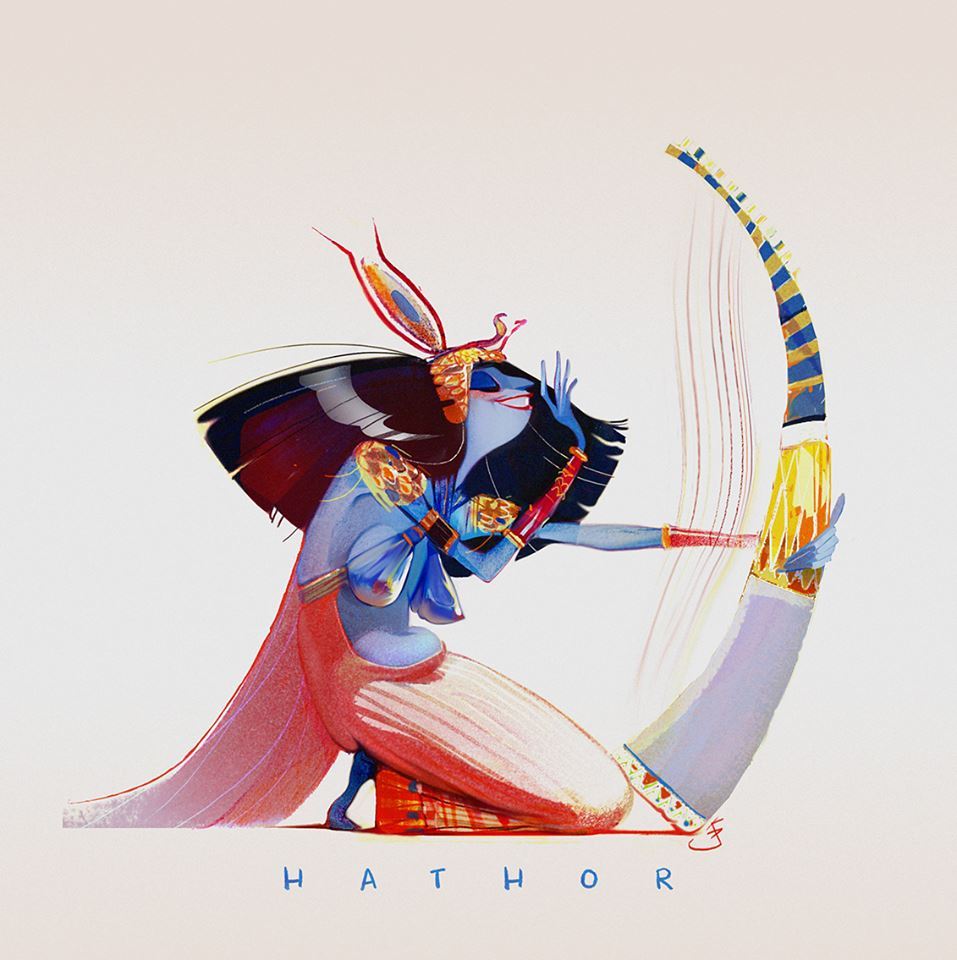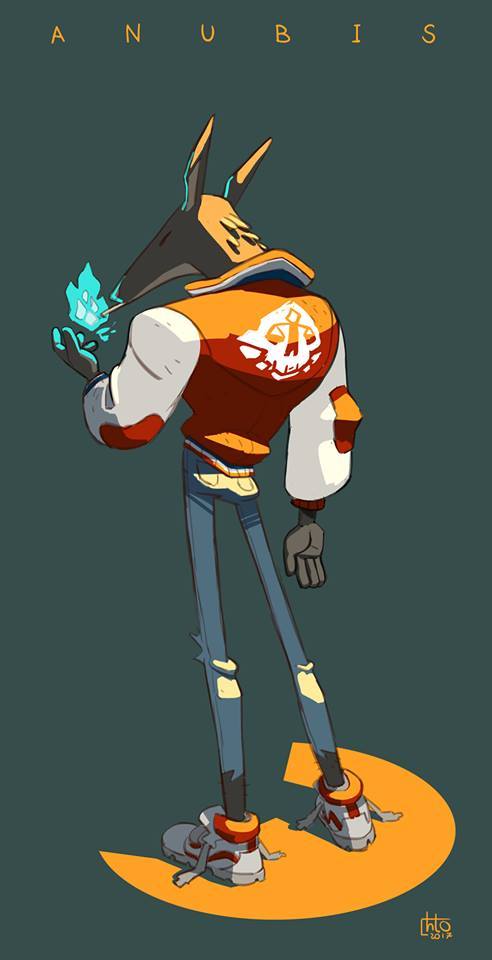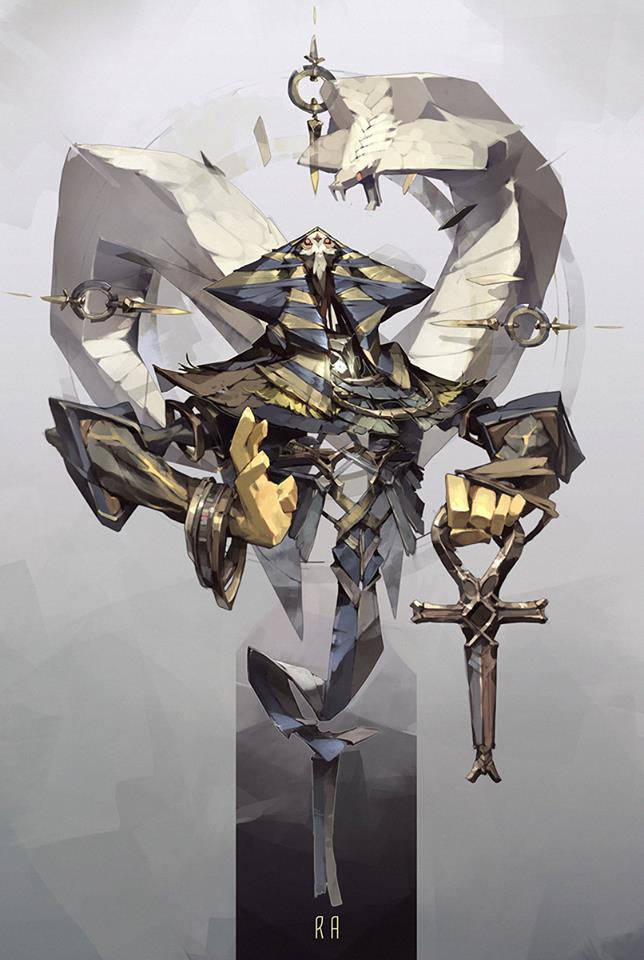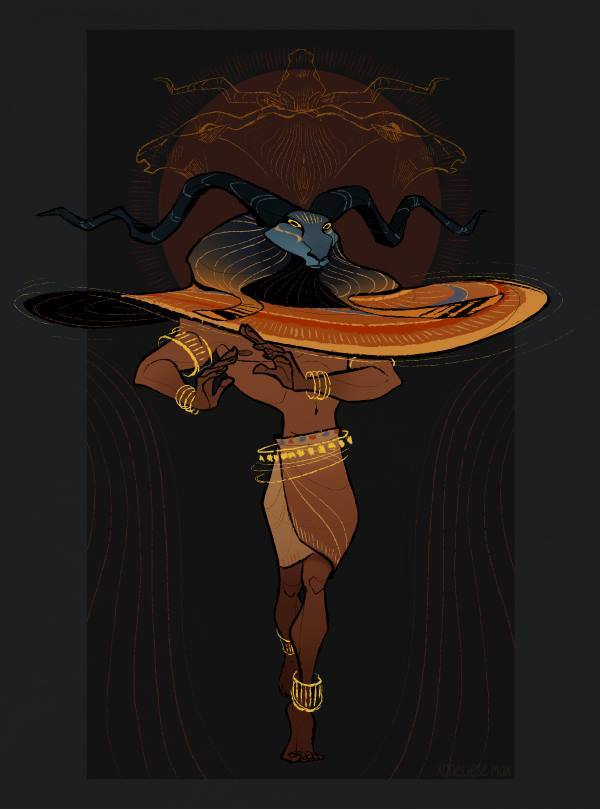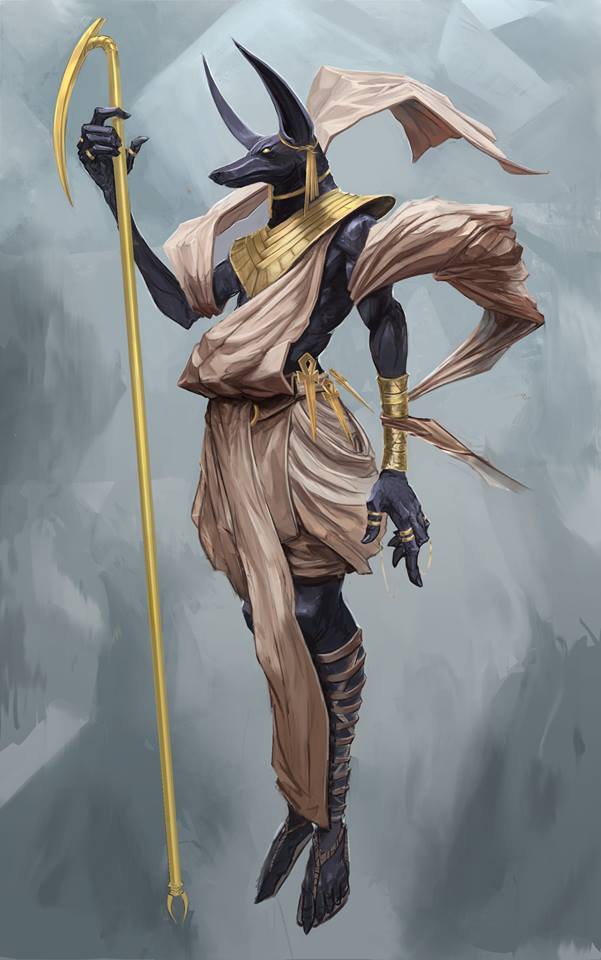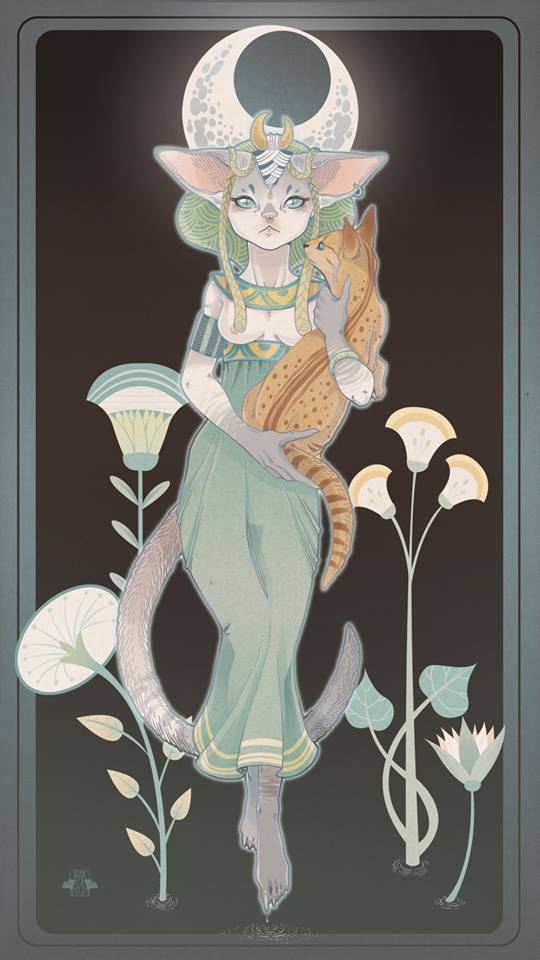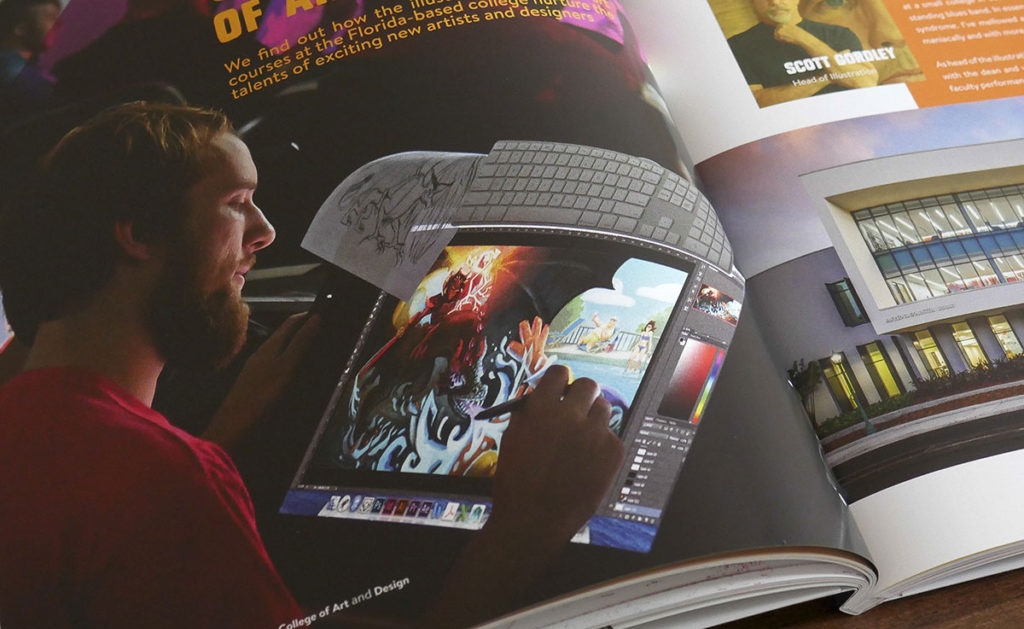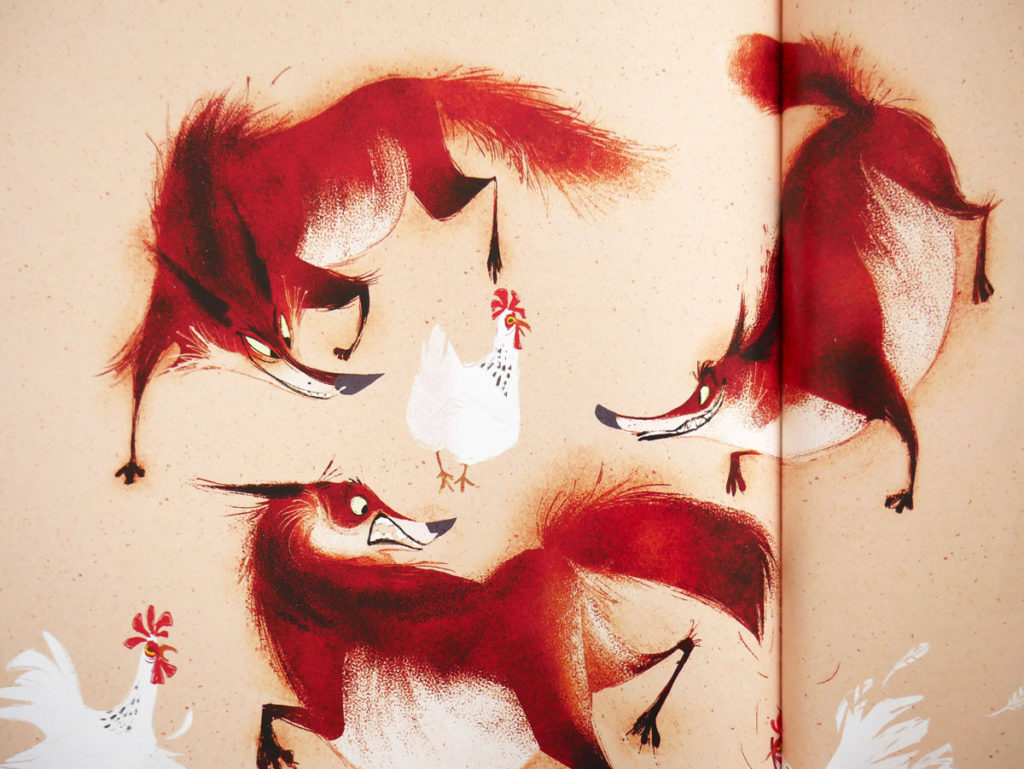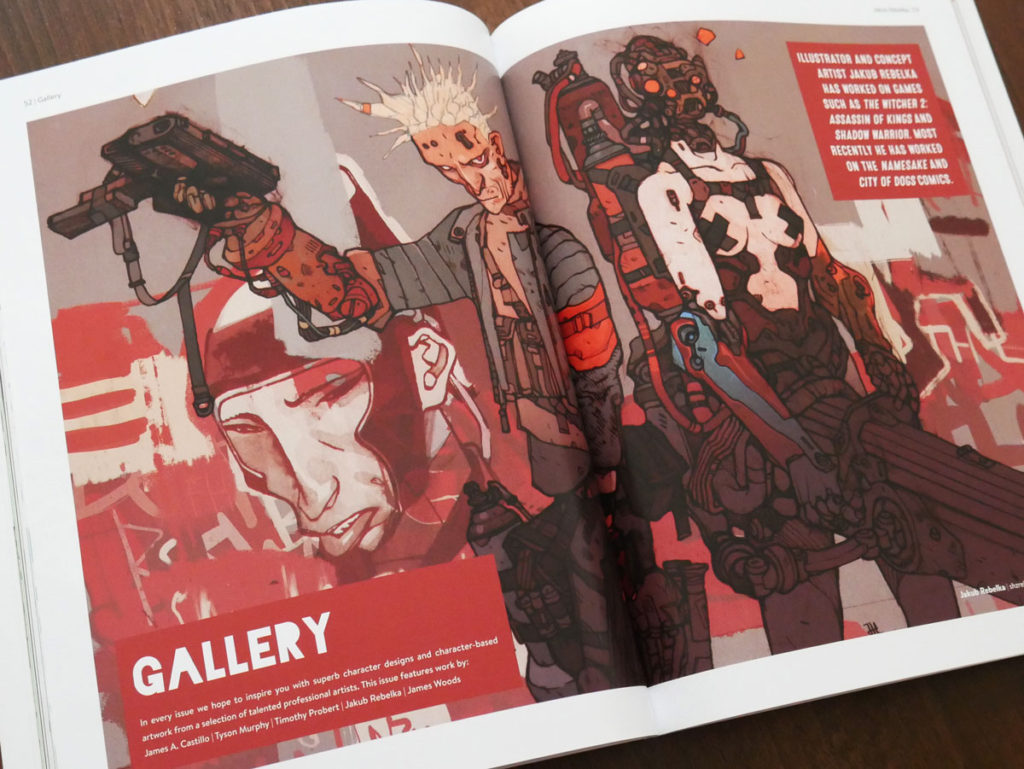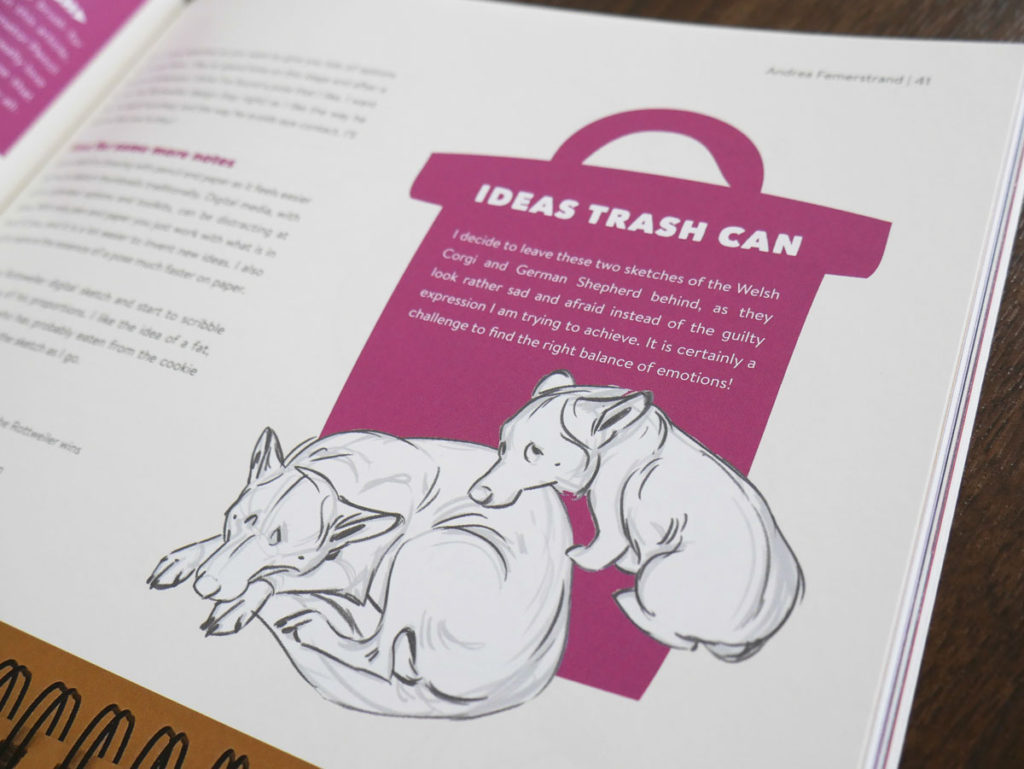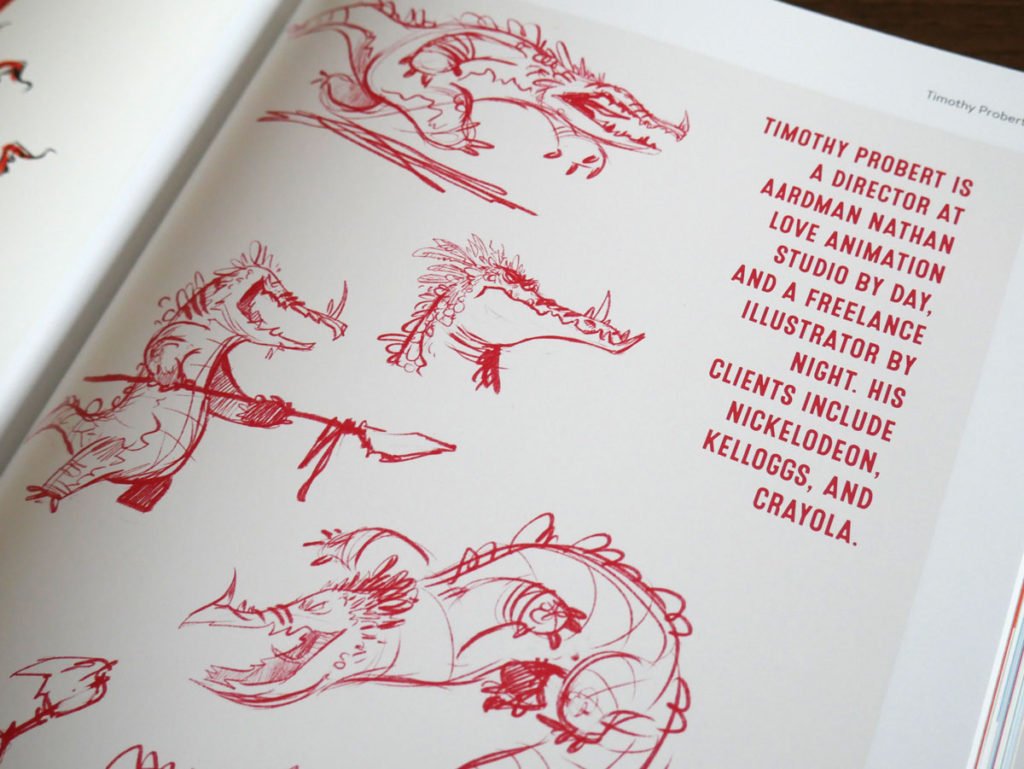Winners of the “Egyptian Gods” Challenge
/Congratulations to Jason McLean, Ellinoora Laine, Crystal Kung and to Wojtek Michalak, the Special Guest Juror’s Choices this month! Thank you so much to ALL the artists of our community who have submitted their work for this challenge, to Sam Nielson for accepting to be our juror this month, and to Character Design Quarterly, the official partner of the CDChallenge, which makes this project possible.
Special Guest Juror's Message
What an incredible contest this month! Over 1700 entries by my count, and a massive number of them were professional-quality designs.
I wanted to include, along with my top choice from the contest, some suggestions for aspiring character designers in the form of my process of picking the top design. I hope that hearing my thought process will at least be interesting to you, and maybe even helpful. Judging between character designs is always going to be subject to personal preferences, there’s no avoiding that. However, I’ve found most art directors have important standards that they base their subjective decisions on, so I decided to judge this contest based on some of the more common criteria that I have run into on my various character design jobs. Some of these criteria were also included to moderate the natural advantage that people who entered strong compositions or paintings have, so that the focus of my judging would be mostly on the quality of the character design.
So here are the criteria I used:
- “Wow” factor
- Story consistency
- Creative relevance
- Character
- Usability
- Story Dollar
I’ll explain what I mean by each below. It took me over 4 hours just to download all the entries so that I could sort them into folders! I knew that I could never judge them all together with all the criteria at once, so I used the criteria individually as gates or filters to pass the images through. My first filter was the “Wow” Factor, which refers to whether the character and its presentation are eye-catching and memorable. This criteria could have been used to narrow down the designs to only a handful, so to keep the field open, I started by asking myself the basic question: “Is the character presented well?” This effectively cut the number of images from 1700 all the way down to 500. This is the first lesson to aspiring character designers and concept artists: if you can’t draw and you haven’t learned basic design principles, it doesn’t matter how great that image is in your head—nobody else will see it. And it doesn’t matter whether you know how to paint if you can’t draw. I should note that I didn’t get super picky with this: a wonky hand here or strange line there wasn’t enough to disqualify a design, while a well-drawn character with no application of design principles would be filtered out fairly quickly.
That said, all the art directors I know see good drawing ability as the baseline now, and solid drawing isn’t enough to stand out anymore. So the second filter I applied to the remaining characters was Story Consistency. The question I asked with each design was, “Does the character clearly tell a story, and is every part working together in service of that story?” If there were designs with contrasting ideas, I would look to see if both motifs were echoed or balanced through the design. This narrowed down the field from 500 images to 150. I’m actually amazed that so many passed this second filter, because this is the one that sets the elites apart from the rest of the field. So for those that missed on this criteria, here is the second lesson: if you’re designing a character, every decision you make has to be purposeful. The shape language, the lines, the proportions, the pose, the costume, the textures, and so forth all have to work in service of the same story. Anything that doesn’t serve the story stands out like a sore thumb, even if it’s done well!
The next filter, Character, is a tough one because there are two different ways of judging it. The main question I asked was, “Does the character has a sense of life and personality?” In other words, can you tell by looking at the design how that character will act? For some designs, the personality came across with a great pose and an expressive face, but in others it came across in the overall impression the character gave—even though the expressiveness wasn’t there, the idea of who the character was came across strongly enough to compensate. This narrowed the field from 150 to 63, but I should note that there were other characters that didn’t pass the previous filters that would still pass this one. In a smaller contest this might have been enough, but with so many high quality entries, you have to rank high in every category! Unfortunately, there were a LOT of entries that had interesting costume design work, but weren’t really character designs. I’ll just refer you to this older post of mine for more on that subject HERE
Creative Relevance is basically another way of addressing whether the character reflects the theme, but in a new and interesting way. The question I asked myself for this filter was, “Have I seen this before?” I tried to look for nuance in this criteria because while some of the designs went farther afield, many were attempting to find something interesting within existing archetypes of Egyptian Gods. This only narrowed down the field to 40, because at this point the designs were all really amazing and creative.
The fact that all the designs were incredible meant I had to pull out a criteria that is more arbitrary in context of this contest, but one that is always being considered by art directors: Usability. Usability was tricky to judge because it meant that I had to relate the designs to my familiarity of all the possible mediums, asking myself, “Does the character look like it could be appropriately used for a game, film, comic, advertisement, or some other format?” Then, if the character suggested a specific medium I also asked, “Does the design present significant issues with respect to the format it suggests it fits best in?” The lesson here is that a design might be only good or bad relative to the format it was designed for. A game character design needs to read very well when it’s seen from a distance and have a memorable silhouette, while an animated film character needs to have the appropriate mixture of detail and simplicity for the close and distant shots, and needs to anatomically allow for the type of squash and stretch that its style suggests it will need. I had to make some assumptions here because many of the designs were created with no end format in mind. But if you’re going to win a character design contest with thousands of entries, you’d better be able to demonstrate the concept of usability in your designs.
This narrowed the design to 18 characters: still too many to make a final decision. So I passed all the designs through the “Wow” Factor filter again, this time choosing out only eight designs that were eye-catching and had that iconic, memorable quality that all great character designs have. With the final eight designs, I created a spreadsheet with the criteria listed above, and I gave the designs rankings in each category. It was amazingly close even with this tight of judging, and I had to add an additional category to break a 3-way tie: Story Dollar. Not every character I’ve worked on has demanded this criteria, but I decided with all things being equal, it seemed fair to score the designs according to their ability to make a whole story explode in your head and make you want to see a story told just about them. Thankfully, the winner with that added criteria matched my gut feeling: Wojtek Michalak’s formidable Anubis Biker.
Wojtek’s design had a perfect ranking in Story Consistency: with individual elements combining to a sum total that perfectly describes the character’s role in the story. It also gets a perfect score on “Wow” Factor; you can’t help but be pulled in by the drawing and composition (yes the face gets a little lost against that gray, but this is a character design competition, not about painting!).
Creative Relevance scores nearly perfect, only dropping a half point because of the dozen or so Biker Anubis designs that were submitted (everyone drinking the same water or something?), but still remaining high because the cumulative effect of the design manages to ride the archetypes while still feeling like something I’ve never seen before.
Great Usability as well: this would fit perfectly as a video game character or in a comic book with almost no adjustments necessary to work in either format.
This would have been the clear winner before adding Story Dollar but for one thing: Character. There’s loads of role-appropriate personality here and I can easily see how this character moves around, but there’s not much room for expressiveness. This is definitely a one-note character. But that’s only a weakness relative to the other character finalists; this design still has loads of character!
If high Story Dollar refers to a character that makes you want to spend time following that character’s journey, I can’t think of a better design in the whole contest. There’s such a great mixture of clarity and mystery here—I just want so badly to know what this guy is all about, what drives him, and to see him tear around the world doing his thing. Nice job Wojtek, you’ve got me invested in his story!
I hope that was a helpful breakdown. It was a blast going through all these high-quality entries! Thanks, everyone who worked hard to make this a great contest!
Special Mentions
This is just a small selection of all the beautiful designs submitted this month for the Character Design Challenge. If you wish to see more designs from the artists of our community, please visit our group on Facebook or follow our Tumblr blog or Instagram page! Click on any of the images below to be redirected to the artists' portfolios and website.
Character Design Quarterly
This challenge is presented by Character Design Quarterly, the Official Partner of CDChallenge.
Character Design Quarterly (CDQ) is an exciting new print magazine for illustrators, artists, animators and character art enthusiasts. Releasing four times a year, the magazine will offer inspirational and educational articles, tutorials and interviews from top industry professionals specifically geared to helping artists hone their character design skills. This unique, engaging magazine will provide a regular stream of insider knowledge and illuminating advice from experienced professionals and freelancers to help artists of all skill levels improve their workflow and designs. New issues will be released at regular three-month intervals in September, December, March and June. Subscriptions are available now!


